Created by Historic Deerfield Museum Education Staff Members, Claire Carlson and Faith Deering.
Welcome to Week Nine of Maker Mondays from Historic Deerfield. Check your social media feed or look for an email from us every Monday for a fun activity that you can do at home, inspired by history and using common household items.
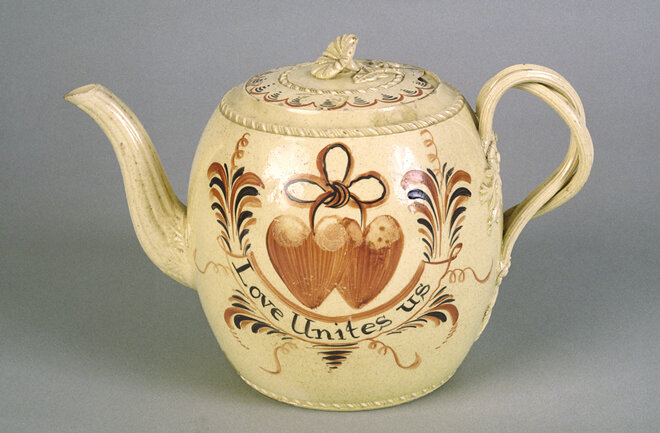
This Monday we have something a little different for you. It is an activity that comes from a popular program we have offered called “All About Tea,” where we like to offer visitors the opportunity to sit and enjoy teatime. So today, we want to offer you a virtual tea party! You can have tea with yourself, your family, or your friends (of course at a safe distance or even on Zoom). We will tell you about how important tea was to early Americans and how tea drinking has come to be associated with comfort, friendship, and social gatherings.
We would like to share some of the history of tea. However, first we need to explain that when we use the word tea we are referring to the plant Camellia sinensis. The dried leaves, buds and stems of this plant are used to make both black and green tea.
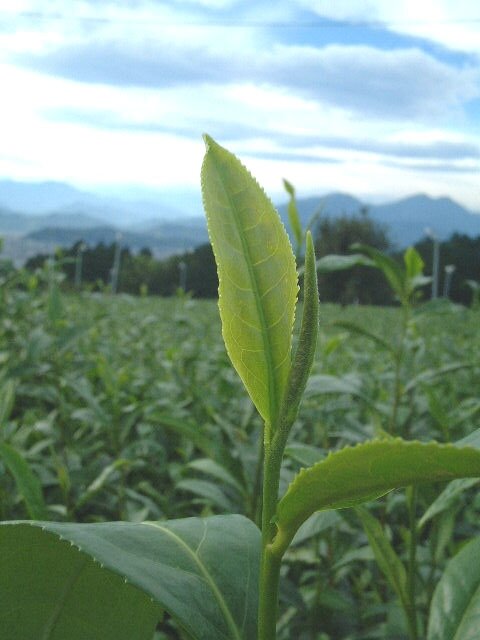
The teas look and taste very different due to the way the leaves are processed after they are picked. All tea leaves have to be harvested by hand and all tea leaves are spread on shelves to dry. This is called withering the leaves. It is in the next step that the differentiation happens.
Green Tea: Once the tea leaves have dried they are thoroughly heated and deeply re-dried so they retain their color and delicate flavor. Green tea leaves retain their caffeine and their antioxidants.
Black Tea: The withered leaves that will become black tea are allowed to go through a process called oxidation. This is the natural, chemical breakdown of the leaf, during which it darkens and develops a stronger flavor. Black tea leaves also contain caffeine and antioxidants.
There are many other types of tea that people enjoy drinking. They also come from the Camellia sinensis plant but may have been processed differently (Lapsang souchong) or had flavors added (Earl Gray and Jasmine) or been grown in India (Darjeeling), as opposed to China.
There are also herbal teas which are not made from Camellia sinensis. They are made by infusing mint, lemon balm, chamomile or other aromatic herbs in hot water. We will call these infusions when we talk about them.
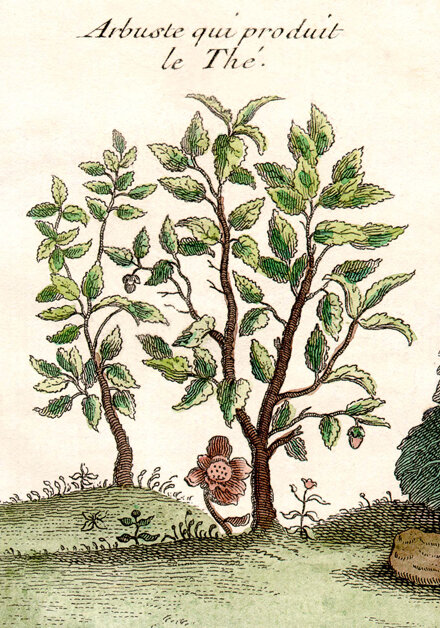
We offer some botanical information about Camellia sinensis. This fascinating and ancient plant is an evergreen forest shrub that is thought to have originated somewhere near the southwest region of China.
The date of its first use by humans is unknown but the leaves were probably chewed rather than brewed, as people attempted to extract the caffeine inherent in the plant. The refreshing, invigorating benefits of the tea leaves led to its use as a medicine long before the leaves were steeped in water and consumed as a beverage. It was not until the 6th century of the Common Era (aka AD) that the leaves were made into a drink and served to Chinese emperors and nobility. The drink was at first exclusively kept for the rich and wealthy but in the centuries that followed its consumption increased rapidly and the drink gained more popularity. By the 1700s, thanks to expanding global trade, tea was regularly being consumed in households in Europe and North America.
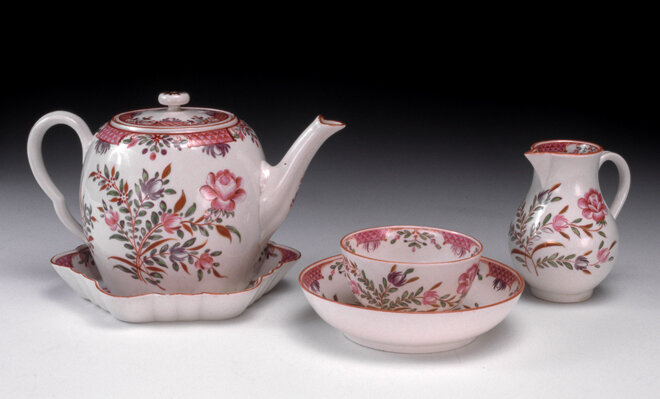
This tea set is from England and was made circa 1770. (HD 75.537)
American families might have tea in the morning with their breakfast meal and again in the late afternoon, around five or six o’clock. Light refreshments would be served with tea: small cakes, dried or fresh fruits, nuts, and bread and butter. Drinking tea was a socially acceptable way for men and women to gather together for companionship. Newly-developed furniture forms called “tea tables” sat people closer together than had been previously the custom, facilitating this intimate interaction.
Because drinking tea with families or friends was a social occasion, certain customs and rules were developed. These rules of etiquette were known as “tea manners.” Although these manners may seem strange to us today, they were carefully followed. Children were expected to follow the rules and learned about tea etiquette by watching their elders. Children were given toy tea sets and encouraged to practice good manners.
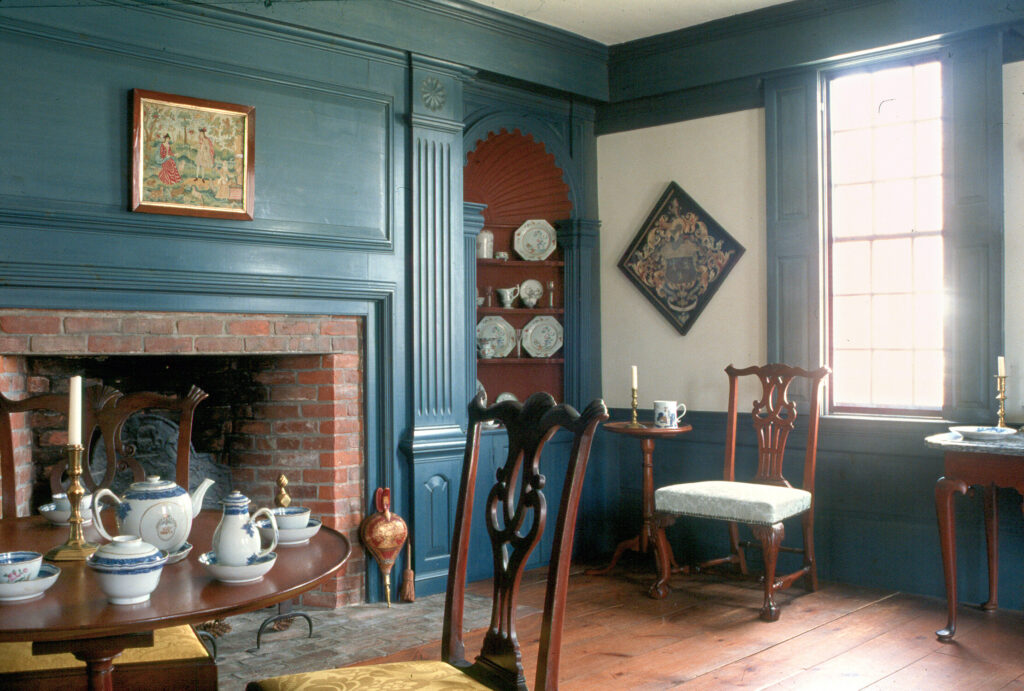
As you read the list of tea manners you can understand that following these rules would ensure a pleasant time for all. Taking tea was a time for family conversation. It was time for telling stories and talking about the news of the day. Everyone at the tea table would be encouraged to participate in the conversation and unnecessary noise would be minimized.
Tea Manners:
-
Do not blow on your tea to cool it: be patient, it is more important to relax and have pleasant conversations while the tea cools.
-
Do not slurp your tea.
-
Do not talk with your mouth full.
-
Your tea is not for washing food down; swallow any food in your mouth before drinking.
-
Do not click your spoon on the cup. It is rude to leave your spoon in your cup.
-
Practice pleasant conversation. Listen carefully to others.
-
Your napkin should remain unfolded in your lap. It is not for blowing noses. If you need to get up during tea, place your napkin on your chair.
What do you think of these tea manners? How would you like to practice them while having tea?
A Tea Time Activity
This week’s Maker Mondays activity is to have your own tea party. Here are some suggestions: You have read about how tea time can be a pleasant and relaxing experience, so please find a quiet place in your house to have tea.There are so many ways to brew tea: you might use loose tea or a tea bag, you might put water in a teapot or right into your cup. Perhaps you will use a black or green tea, or perhaps an herbal infusion. You certainly might want to have a light refreshment or a snack with your tea. If you have enjoyed our biscuits or the cup cake from our previous posts, you could check our website for the recipes. If you are having tea with others, practice the tea manners and have an invigorating conversation. If you are taking tea alone, find a nice spot to sit, and enjoy!
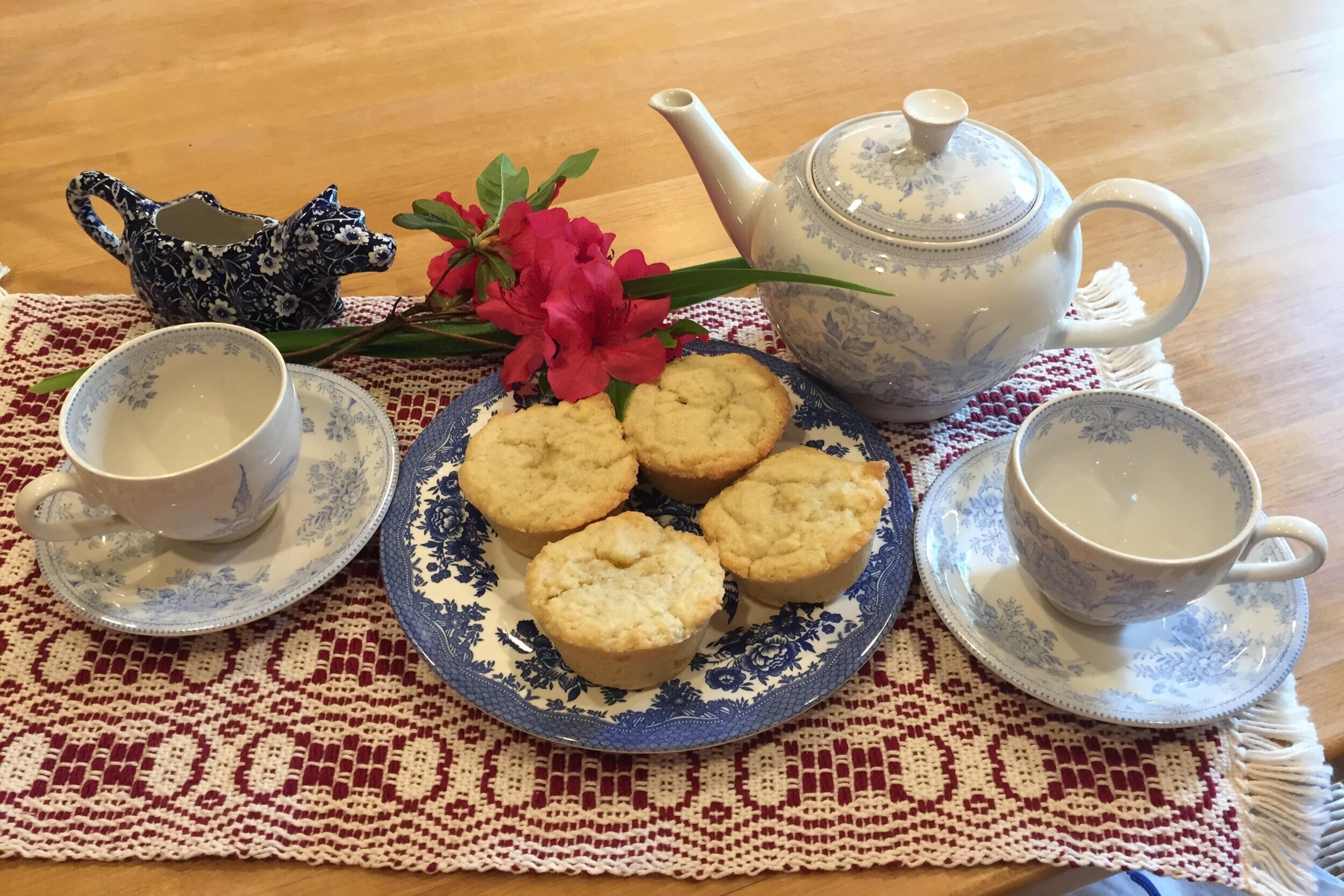
We have loved the photos and comments you have sent to us over these past few months. Thank you. Take a photo (or screen shot, if virtual) of your tea party and share it with us at
historicdeerfield@historic-deerfield.org